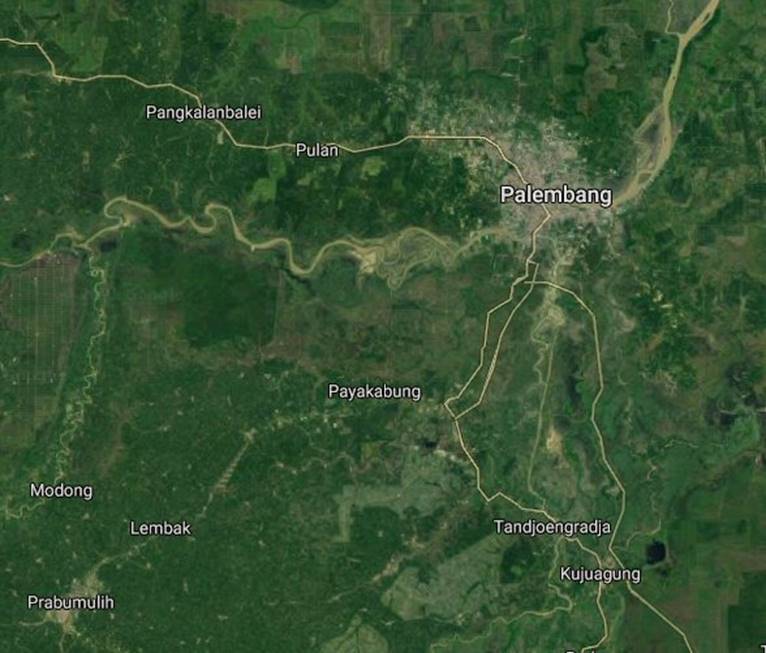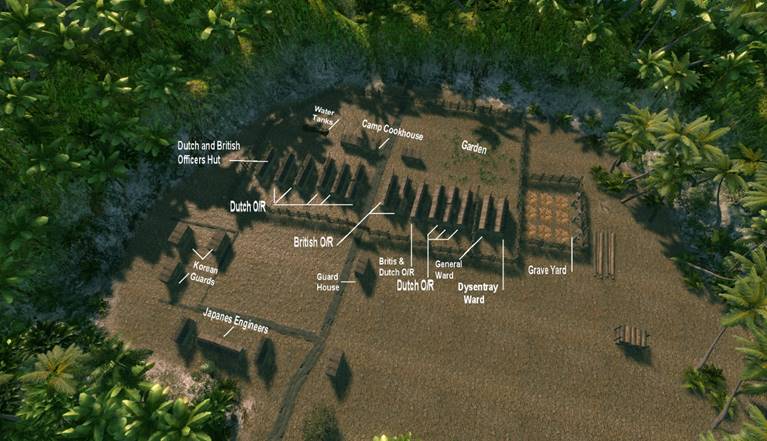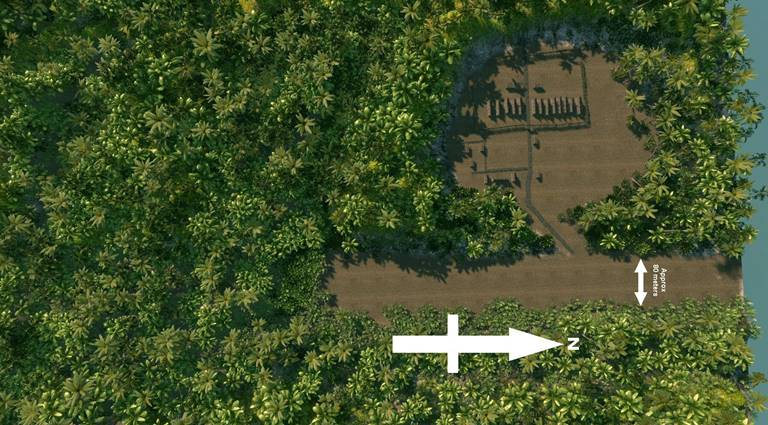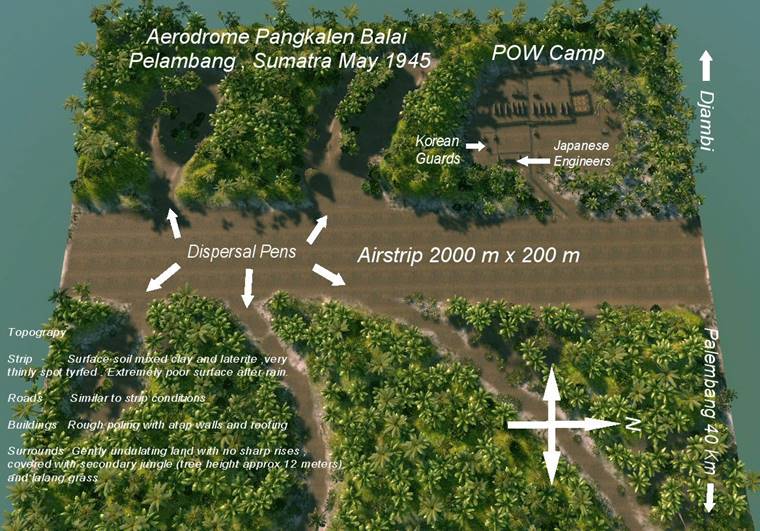Java Party 19
This Website is not public domain
Contact me if you
use any of the information contained in it
Kevin Snowdon copyright 2022
On the 7th of November 1943, approximately 2000 men of Java Party 19 were
moved from Java.
The men boarded the “SS France Maru”
, they were forced to drop their kit on the deck, they were then herded into
two holds by screaming Korean guards wielding sticks and beating the men as
they went down the companion way, when all the men were onboard there was about
1000 men in each of the two holds ,
it was impossible to lie down, there was only enough room to sit with their
knees up against their chins. The men were allowed on deck during day time but
because of the limited space a large percentage of the men had to stay in the
hold. The Latrines were located along the deck and there was not enough of them
to cope with the number of men on board, they quickly became insanitary .
Washing was almost impossible with the small ration of water the men were
given. The serving of food was extremely difficult, the food was cooked on deck
then the twenty-gallon drums had to be manhandled into the holds, distribution
was a major problem because the lack of space prevented an orderly queue being
formed and caused frequent disputes, especially between different
nationalities. The Japanese insisted that a Roll Call was carried out twice a
day, which was almost physically impossible. This routine continued for three
days on the route to Sumatra .
The ship arrived at Palembang on the 10th
of November 1943 , the men were disembarked on the next day , the 11th. 500 men
of the Netherland contingent were separated out and take to another location,
leaving 1500 men who were taken by lorries to work on extending the Airstrip at
Pangkalan Balai
.

Pangkalan
Balai approx. 40Km - 45 Km North West of Palembang
Arriving
at Pangkalan Balai the men
were put into the POW Camp known as Dai Itchi .

Dai Itchi POW Camp 1945
The work on the Aerodrome involved extending the Airstrip, which had just been
hacked out of the Jungle. The Aerodrome the men were tasked to build would end
up approx. 2000 meters long by 200 meters wide.
The men and the Romusha
(native Sumatran/ Javanese Labours) were tasked to clear the jungle first then
they had to remove the thousands of cubic meters of earth and use this to level
the depressions, all by hand. The first month the men found the work although
monotonous, was easier because of the lack of supervision by the Japanese.
There was an adequate supply of rice and vegetables with some fish and meat
almost on a daily basis. Work on the camp progressed to provide better billets
for the men and a hospital hut was also constructed.

The Existing Runway at Pangkalan Balai
For the purpose of administration, all men were combined into one company,
British 420 (199 RAF) and the remainder consisting of Netherlanders making a
total of 1497 men. The Camp commander was Lieutenant Colonel Holms.
At
the beginning food was of adequate quantity and quality, but after the first
month both quantity and quality began to deteriorate, sickness, particularly
dysentery began to rise.
The work became harder as the Japanese engineers demanded set quotas be met.
The Japanese said that work party numbers demanded by them had to be met, so
men were taken away from the camp duties and the less
sick men were forced to work, when complaints about taking sick men out to work
were raised, the Japanese Doctor said “If the sick men collapse while working
we will send them back to the camp”
The
men were forced to Parade before and after working on the Aerodrome, standing
in the sun as they counted off adding to the suffering of the men, the Japanese
knew full well that escape was almost impossible,
as any escapees would have to trek through dense jungle and any native
Sumatrans would hand them back to the Japanese where they would almost
certainly have been executed.
The men suffered many beatings for no reason, Complaints to the Japanese
Commandant were ignored and actually led to more beatings being given out.
By
1944 the conditions in the camp steadily decline, increased workloads and
worsening food rations began to effect morale
and
the health of the men, the worst cases began to be transferred to Palembang. The worsening food situation
also meant the men began to take greater risks by trading with the Sumatrans,
if caught, the men would have been given
a severe beating, ironically, some of the Japanese guards were willing to trade
with the men.
Sickness
increased, Beri Beri and Pellagra became almost as
wide spread as Dysentery, the Latrines that were in between the huts were
closed down and moved further away from the huts.
Dysentery became so wide spread that a second hospital hut was opened to house
the sick men. There were about 200 hospital patients and about another 300 sick
in quarters.
The
camp had set up a fund to buy essential food and medicine, in February this was
stolen and the Japanese reacted by forcing the men to post a guard at each end
of the huts during the night, depriving the men on guard duty of much needed sleep,
the Japanese and Korean Guards now found a new excuse to hand out a beating, if
the men guarding the huts were found to be asleep or did not bow to the Guards
during these surprise inspections. All this began to take a toll on the men,
their morale began to fall even more.
On March the 18th 1944 General Saito visited the Aerodrome,
Lieutenant Colonel Holms requested a meeting, but this was rebuffed, after a
brief inspection of the work progress General Saito departed leaving orders to
speed up the construction, making the POW lives even harder.
The
rice rations were frequently received with as much as 25% underweight,
obviously the rice was being pilfered before the POWs received it , when this
was brought to the attention of the Japanese Guards, they simply took away the
weighing scales and said that if the sacks were supposed to weigh 100Kg that’s
what they weighed.
One day the POWs received raw prawns as
part of their rations ,they were in fact rotten but it was not noticed and they
were cooked, that night nearly every man in the camp suffered violent food
poisoning and were doubled up in agony for more than 24 Hours, with the Latrines being further
from the huts the camp became an almost open cesspit. The Japanese gave the men
one day to recover but when the work party was called to parade the next day
only 200 men were capable of work, the Japanese were incensed and threatened
reprisals, but it took almost three weeks for the camp to fully recover.
The men working on the Aerodrome were allotted
a Quota of earth to move, marked with pegs and were not allowed to finish
working until this quota was met, it was almost impossible to meet the quota in
the condition the men were now in, so some men moved the pegs, so allowing them
to finish their quota, unfortunately the Japanese and Korean guards then
demanded they do more, if the men did not move the pegs, they were beaten for
not working hard enough, it was a vicious circle.
Work
continued at a pace without any thought given to safety even after a few
embankments had collapse near the men, one day an embankment collapsed killing
three Netherlanders, the Japanese simply blamed the men for being careless.
During
August 1944 the Aerodrome extension neared completion, the men had been
promised rest but this did not happen, instead the men received half a packet
of “Shag Tobacco” and they were allowed to slaughter one pig to share with the
whole camp. Lighter work was now found for the men, basically to keep them
occupied.
Morale
was lifted by the arrival of the first mail the men had received while being a
POW and Red Cross Parcels were handed out, one for every 10 men, rations were
also increased.
As 1944 drew to a close work was again
speeded up as Dispersal Pens for the Aircraft were ordered to be constructed, a
sign that the war was turning against the Japanese.
Life dragged on but around May 1945 the
men began to be transferred to Sungie Geron POW camp in Palembang, the men found the
conditions there were even worse than at Dai Itchi.
Ironically as the men left, the Aerodrome was scarcely more serviceable
than when they arrived in 1943 and the last view the men saw was the Sumatran /
Javanese laborers working on the runway trying to rectify drainage problems by
altering the elevation of the start and end of the runway and constructing
drainage ditches.

Pangkalan Balai
Aerodrome May 1945
A short extract from Ray Stubbs book “Prisoner of Nippon”
Sungie Geron POW Camp
Palembang , Sumatra
“The month of May that had brought joy and deliverance in Europe, brought only
despair and despondency to us in Sumatra (Sungei Geron Camp)”
“But there was something else, a bombshell that was to upset even further the
limbo between life and death in our ghetto”
“We were told that men from an other camp were to be
transported in, our already cramped conditions were to be invaded by men from Pangkalan Bali, this camp, which we had vaguely heard of as
Dai Ichi, was some considerable distance from
Palembang, but was also under the overall command of Captain Hachisuka”
This
intake into Sungei Geron
POW Camp was to be balanced by the draft out of a large contingent of men who
were to be sent to Singapore. The draft included senior Officers, numbering
approximately 100 and about 1000 other ranks consisting of light duty men but
not hospital cases.
The
Men from Dai Itchi had no billets to sleep in so were
forced to sleep in the gardens without cover, but on the 25th of May
they we taken to the docks and boarded a cargo boat of about 1200 tons, there
was approximately 1200 officers and men crammed on the boat, this time they
were quartered on the deck with no shelter from the wind and rain,
leaving behind the sick men in
Sungie Geron POW Camp, unfortunately many of them died there.
On the 29th
of May they arrived at Changi, Singapore, tired and dirty it was the first time
they had seen electric light and running water in almost nineteen months.
Java Party 19 Roll
Source Material :-
Based on the report contained in File WO
208 / 4286
Compiled by Flight Lieutenant G S Owen
The Digital Artwork of Pangkalen Balai Aerodrome and Dai Itchi are based on sketches from WO 208 / 4286 and
are by me
The Book “Prisoner of Nippon” by Ray S Stubbs
I began researching Java Party 19 and
Dai Ichi camp at Pangkalan Balai and the Roll between March 2021 to September 2022
Kevin Snowdon